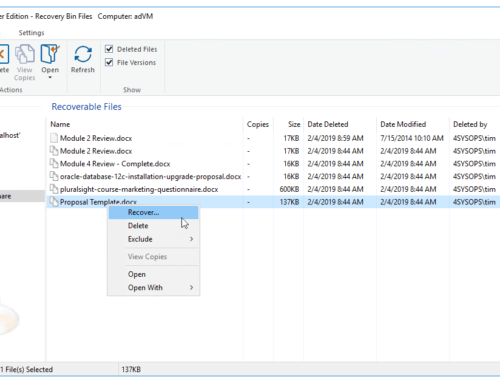According to our recent survey to Meditech hospitals, half receive staff or customer complaints regarding EHR performance while the other half do not. Since virtualizing, 62% purchased a new SAN, 10% added SAS spindles, 20% added server-side SSDs or PCIe flash, 24% added storage-side SSDs, 38% added additional servers, and 24% have not seen I/O performance issues. In the coming year, 29% will purchase a new SAN, 5% will add SAS spindles, 15% will add server-side SSDs, and 24% will add storage-side SSDs.
Most notably, merely 1/3rd were aware of the Meditech service bulletins alerting Meditech 5.x/6.x users of the FAL size growth issue from severe fragmentation that can result in unscheduled downtime if left unchecked.
To date, 65 Meditech hospitals have turned to Condusiv’s V-locity® I/O reduction software for automatic FAL remediation and improved EHR performance, so they no longer have to worry about unscheduled downtime and achieve 50-300% more performance from existing systems.
Since a lot of Meditech hospitals don’t fully understand the FAL size growth issue and how that affects their systems, here is a brief explanation:
When someone mentions heavy fragmentation on a Windows NTFS Volume, the first thing that usually comes to mind is performance degradation. While performance degradation is certainly bad, what’s worse is application failure. That is exactly what happens in severely fragmented environments when no more data can be added to files or no more files can be inserted under a folder file. This Windows limitation has a direct impact on the availability of the Meditech application, as several Meditech hospitals know too well. It is a show-stopper that can stop any hospital in its tracks until the problem is remediated.
The FAL size has an upper limitation of 256KB. When that limit is reached, no more mapping pointers can be added, which means NO more data can be added to the file. And, if it is a folder file which keeps track of all the files that reside under that folder, NO more files can be added under that folder file.
So what can be done about it?
The logical solution would be – why not just defragment the volume? The problem is that traditional defragmentation utilities can decrease the number of mapping pointers, but will not decrease the FAL size. Furthermore, due to limitations within the file system, traditional methods of defragmenting files cause the FAL size to grow even larger, making the problem worse even though you are attempting to remediate it.
For more detail on the FAL issue and how Condusiv has addressed with its fragmentation prevention and FAL remediation product lines, read the white paper, “Automatic FAL Remediation and Improved Performance for Meditech.”



